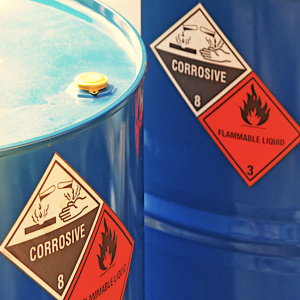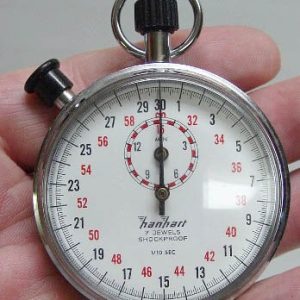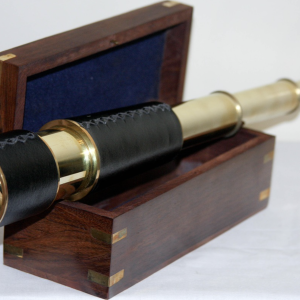Want to experience the greatest in board studying? Check out our interactive question bank podcast- the FIRST of its kind here: emrapidbombs.supercast.com
Author: Blake Briggs, MD
Peer Reviewer: Shad Baab, MD
Introduction
There have been some recent guideline changes to working up neonates (≤28 days old) with a fever. Instead of rehashing the new changes, let’s start from scratch.
A fever is defined as a rectal temperature ≥ 38 (≥ 100.4 F). The term “serious bacterial infection” has been replaced by “invasive bacterial infection” (IBI).
Overall, viruses remain the most common cause of fever in neonates.1 However, even if neonates have a viral infection, they are at high risk for invasive bacterial infection. Compared to older infants, neonates are also at increased risk of mortality from viruses due to decreased responsiveness of T cell-mediated immunity.
Who carries the highest risk of an IBI? 2,3
Neonates ≤ 21 days old
Prematurity (gestational age < 37 weeks): premature infants have rates of sepsis 10-12 times that of term infants.
Accelerate your learning with our EM Question Bank Podcast
- Rapid learning
- Interactive questions and answers
- new episodes every week
- Become a valuable supporter
Ill appearance: lethargy, irritability, respiratory distress, poor capillary refill/skin color (often, the exam is unrevealing, and signs of infection may be subtle!)
Chronically ill infants: fairly obvious – any infant that already has a medical or surgical history is at high risk.
Maternal factors: any maternal fever, chorioamnionitis, maternal Group B Streptococcus colonization.
Infection sources: UTIs make up the most common site of bacterial infections in neonates. E. coli is still the king and is the most common bacterial pathogen to cause, UTIs, bacteremia, and bacterial meningitis in febrile neonates.3 GBS is second.
History and Exam
Sadly, febrile neonates do not commonly demonstrate clues to hint at an underlying IBI. Even worse, as many as 50% of neonates presenting with sepsis may be normothermic or hypothermic (scary).3
Those presenting very sick appearing need resuscitation. This is beyond the scope of our review here. Let’s focus on the well-appearing neonates with fever.
Critical questions to ask the caregiver: how has the feeding been? Has the neonate had increased crying or a weak cry?
You should ask about perinatal history and delivery. At how many weeks gestation was the neonate born? Did the mother have any complications during pregnancy (e.g. chorioamnionitis, GBS, HSV)?
The neonatal exam heavily relies on a physician’s experience and knowledge- it is not easy for a beginner. Listen for pneumonia, look for omphalitis, septic arthritis, or cutaneous cellulitis or abscess. Meningitis is super rare to find on exam (nuchal rigidity is almost never present in neonates – more reliable clues are inconsolability, seizures, bulging fontanelle, changes in tone).
All febrile neonates with a focal infection (cellulitis, abscess, mastitis, pneumonia, septic arthritis) still require a complete sepsis workup.4 Even neonates with a viral infection require a full sepsis workup because rates of IBI do not differ from neonates without viral infections.5
8 to 21 days old: full evaluation for sepsis is needed. Here’s what that may entail (each hospital differs):
– CBC, CMP, blood culture, urinalysis & urine culture, COVID-19 and Influenza (possibly full respiratory viral panel) nasal swab, chest x-ray, +/- procalcitonin or CRP, CSF cell count/culture/protein/glucose/gram stain.
– HSV studies should be obtained in high-risk neonates: maternal history of genital lesions, maternal fevers from 48 hours before to after delivery, or neonatal vesicles/seizures/hypothermia/oral ulcers, CSF pleocytosis, elevated LFTs, or critically ill.
22 to 28 days old: only neonates with risk factors for IBI need a full sepsis evaluation. Traditionally, this group was included in the full sepsis workup, but recent evidence has found that neonates 22-28 days old have a lower risk of IBI when inflammatory markers and urine studies are normal and can be managed without an LP. This is the “step-wise” evaluation.3
CSF studies should be obtained if one or more are abnormal: procalcitonin, CRP, absolute neutrophil count (>4000), or rectal temperature >38.5 (101.3 F). If there are no abnormal findings, evidence has found that the risk of IBI is <0.7%. Observe these patients in the hospital until blood cultures are normal.
22 to 28-day old neonate: urinalysis & culture, blood culture, procalcitonin, CRP, CBC with diff.
– If abnormal inflammatory markers or increased absolute neutrophil count, perform LP.
Management
8 to 21 days old require empiric antimicrobial therapy and admission to the hospital.6
If there is no obvious source of infection identified, the following 4 agents are preferred:
-Ampicillin plus one of the following: ceftazidime, cefepime, cefotaxime, gentamicin
-Acyclovir (if at risk for HSV, see above)
-Vancomycin (usually reserved for critically ill or those with specific indications)
22 to 28 days old management depends on the stepwise approach
-If criteria for LP are not met and there is low clinical suspicion for meningitis, admit to the hospital for observation and culture follow up.
-If LP is performed and shows any pleocytosis, traumatic tap with CSF RBCs >10,000, or is an unsuccessful attempt, give IV antimicrobials and admit.
-If LP is negative, discuss observation at home or in hospital (for home observation, the following must be present: reliable phone and transport, parent willingness to observe patient, ability to reevaluate infant in 24 hours). If you send the patient home, a single IM dose of ceftriaxone should be given and a second dose should be given at 24-hour follow up.
References
1. Sarna M, Ware RS, Lambert SB, et al. Timing of First Respiratory Virus Detections in Infants: A Community-Based Birth Cohort Study. J Infect Dis 2018; 217:418.
2. Garcia S, Mintegi S, Gomez B, et al. Is 15 days an appropriate cut-off age for considering serious bacterial infection in the management of febrile infants? Pediatr Infect Dis J 2012; 31:455.
3. Pantell RH, Roberts KB, Adams WG, et al. Evaluation and Management of Well-Appearing Febrile Infants 8 to 60 Days Old. Pediatrics 2021; 148.
4. McLaren SH, Cruz AT, Yen K, et al. Invasive Bacterial Infections in Afebrile Infants Diagnosed With Acute Otitis Media. Pediatrics 2021; 147.
5. Blaschke AJ, Korgenski EK, Wilkes J, et al. Rhinovirus in Febrile Infants and Risk of Bacterial Infection. Pediatrics 2018; 141.
6. Gomez B, Mintegi S, Bressan S, et al. Validation of the “Step-by-Step” Approach in the Management of Young Febrile Infants. Pediatrics 2016; 138.




